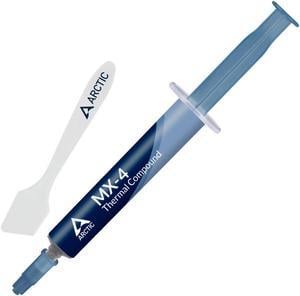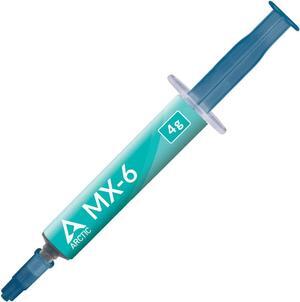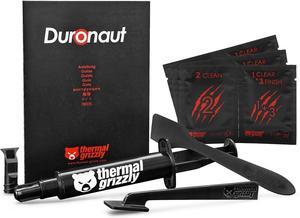Your Browsing History
- Remove Combo
Deal Options
- In Stock
- Sold by Newegg
- New
- Make an Offer
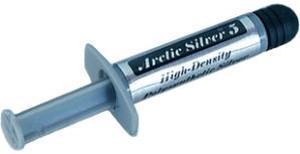
Quick View
#1 Best Seller
- Volume / Net Weight: 3.5g
- Long Term Operating Temperature: -50 to 130 C
- Specifications: Average Particle Size: < 0.49 micron < 0.000020 inch Extended Temperature Limits: Peak: -50 Celsius Degree to >180 Celsius Degree Long-Term: -50 Celsius Degree to 130 Celsius Degree Performance: 3 to 12 degrees centigrade lower CPU full load core temperatures than standard thermal compounds or thermal pads when measured with a calibrated thermal diode imbedded in the CPU core. Coverage Area: A 3.5 gram syringe contains enough compound to cover at least 15 to 25 small CPU cores, or 6 to 10 large CPU cores, or 2 to 5 heat plates. At a layer 0.003" thick, the 3.5 gram syringe will cover approximately 16 square inches.
- Model #: AS5-3.5G
- $6.99
- $6.32 –
- Save: $0.67 (9%)
- More options from $4.89 - $30.56
- Free Shipping
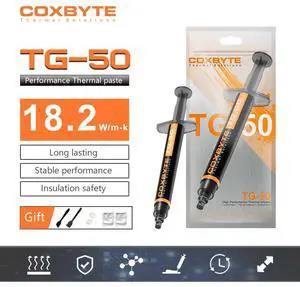
Quick View
in 30 days
Coxbyte TG-50 thermal paste, 18.2W/mK ultra-high thermal conductivity suitable for CPU/server/GPU thermal conductivity, non corrosive,2g- Volume / Net Weight: 2.0g
- Thermal Conductivity: 18.2 W/mK
- Long Term Operating Temperature: -50 to 250 C
- Specifications: TG-50 adopts a composite formula of nano carbon tubes and liquid metal, with a thermal conductivity exceeding 18.2W/mK (measured value), which can quickly reduce the temperature difference between CPU/GPU cores by more than 25 ℃,. Its non-conductive properties eliminate the risk of short circuits, with good viscosity optimization. Single point/nine
- Model #: coxbyte004
- $15.99
- $9.99 –
- Sale Ends in 11 Hours - Save: $6.00 (37%)
- Free Shipping

Quick View
PTM7950 80x40x0.2mm Phase Change GPU Thermal Pad, High Conductive Silicone Grease 8.5W/mK CPU Thermal Paste for PS5 Steam Deck CPU GPU SSD M.2 Laptop
- Model #: PTM7950-40*80mm-A
- $19.99 –
- Free Shipping
Sponsored
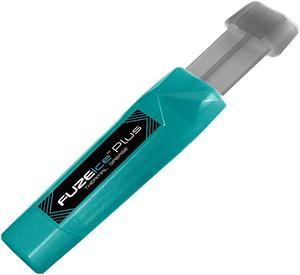
Quick View
Iceberg Thermal FUZEIce Plus Thermal Paste Heatsink Compound CPU GPU High Performance Grease (3.5g)
- Volume / Net Weight: 3.5g
- Model #: FUZEICEP4G-X0A
- $8.99 –
- Free Shipping
Sponsored
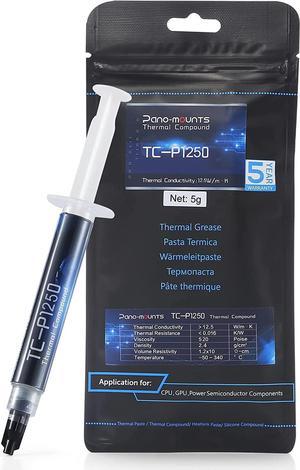
Quick View
in 30 days
PANO-MOUNTS 12.5W/m·K 5g High-Conductivity Thermal Paste - CPU/GPU/PS5 Cooling Compound for Gaming Laptops, Graphics Cards, AM5 Heatsinks| PC Gamer Thermal Gel, Non-Conductive Liquid Metal Alternative- Volume / Net Weight: 12.5W/mK 5g
- Model #: TC-P12505
- $10.99
- $9.99 –
- Save: $1.00 (9%)
- Free Shipping
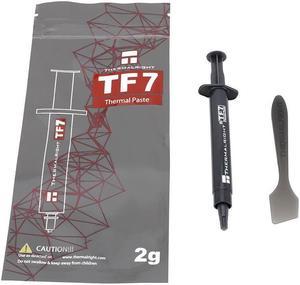
Quick View
Thermalright TF7 2g Thermal Paste Compound for Coolers,Thermal Conductivity is 12.8W/m.k-2 Grams, Graphic Card CPU Thermal Grease, Laptop Thermal Grease
Limited time offer, ends 07/06
- Volume / Net Weight: 2g
- Thermal Conductivity: 12.8W/mk
- Long Term Operating Temperature: -150/ +250 C
- Specifications: non conductive, non corrosive
- Model #: TF7 2g
- $7.90 –
- Sale Ends in 11 Hours -
- More options from $7.89
- Free Shipping
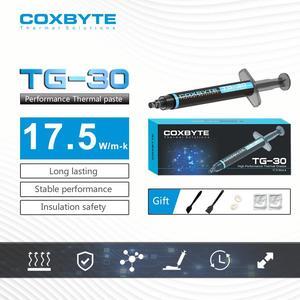
Quick View
in 30 days
Coxbyte TG-30 thermal paste, 17.5W/mK ultra-high thermal conductivity suitable for CPU/server/GPU thermal conductivity, non corrosive,4g- Volume / Net Weight: 4g
- Thermal Conductivity: 17.5 W/mK
- Long Term Operating Temperature: -50 to 250 C
- Specifications: TG-30 adopts an improved nanocarbon tube composite formula with a thermal conductivity of 17.5W/mK (measured value), which can quickly reduce the temperature difference between CPU/GPU cores and meet the cooling needs of mainstream gaming consoles, high-performance graphics cards, and workstations. Its non-conductive properties completely avoid the risk of short circuit,
- Model #: coxbyte002
- $11.99
- $10.99 –
- Sale Ends in 11 Hours - Save: $1.00 (8%)
- Free Shipping
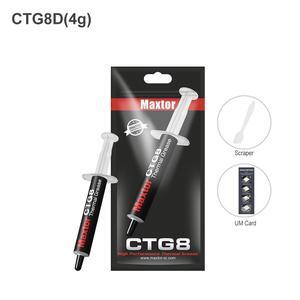
Quick View
Maxtor Thermal CTG8 12.8W/mk thermal paste,Gaming grade CPU/GPU/cooling fan overclocking thermal grease,High TDP device cooling solution,4g syringe installation
- Volume / Net Weight: 4.0g
- Thermal Conductivity: 12.8W/mK
- Long Term Operating Temperature: -50 to 250 C
- Specifications: The thermal conductivity of CTG8D reaches 12.8W/mK, achieving above average performance on the market at a relatively moderate price. It can quickly reduce the temperature difference between CPU/GPU cores and meet the cooling needs of mainstream gaming laptops, desktop computers, and mid-range graphics cards. The non-conductive formula completely avoids the
- Model #: Newegg001
- $9.99
- $9.59 –
- Sale Ends in 11 Hours -
- Free Shipping

Quick View
PTM7950 40x40x0.2mm Phase Change GPU Thermal Pad, High Conductive Silicone Grease 8.5W/mK CPU Thermal Paste for PS5 Steam Deck CPU GPU SSD M.2 Laptop
- Model #: Honeywell PTM7950-40*40mm-A
- $12.99 –
- Free Shipping
Sponsored
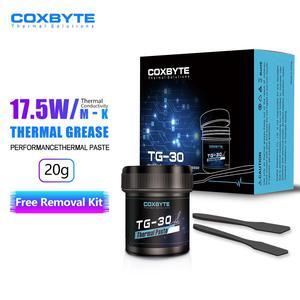
Quick View
in 30 days
Coxbyte TG-30 thermal paste with ultra-high thermal conductivity of 13.8W/mK, Premium Performance Thermal Paste for all processors, Canned 20g- Volume / Net Weight: 20g
- Thermal Conductivity: 17.5 W/mK
- Long Term Operating Temperature: -50 to 250 C
- Specifications: TG-30 adopts an improved nanocarbon tube composite formula with a thermal conductivity of 17.5W/mK (measured value), which can quickly reduce the temperature difference between CPU/GPU cores and meet the cooling needs of mainstream gaming consoles, high-performance graphics cards, and workstations. Its non-conductive properties completely avoid the risk of short circuit,
- Model #: coxbyte26
- $17.99
- $16.99 –
- Sale Ends in 11 Hours - Save: $1.00 (5%)
- Free Shipping
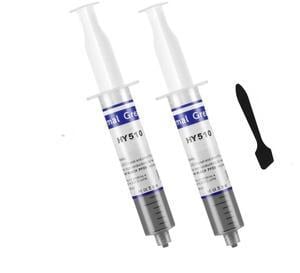
Quick View
HY510-74g (37g*2) HY510 Thermal Paste Kit, Thermal Conductivity: >1.93W/m-k,Premium Performance Thermal Compound Paste Grease Heatsink for CPU, Processor,Computer, PS4, 74 Gram 1Pcs Black Scraper
Limited time offer, ends 07/06
- Features: EXCELLENT THERMAL CONDUCTIVITY:Thermal conductivity 1.93 W/m-k. It ensures that the heat generated by the CPU or GPU is effectively dissipated.and subsequently excellent temperature reduction performance HIGH DURABILITY: Low thermal resistance can keep mushy for a long time. Wide operating temperature range, stable performance under -30℃-280℃ environment. High heat dissipation performance, high-cost
- Model #: BL-HY510X2
- $22.78
- $18.99 –
- Sale Ends in 11 Hours - Save: $3.79 (16%)
- Free Shipping
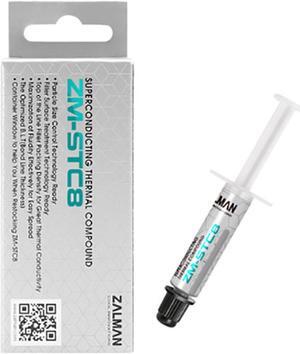
Quick View
- $9.99
- $7.90 –
- Save: $2.09 (20%)
- Free Shipping
Sponsored
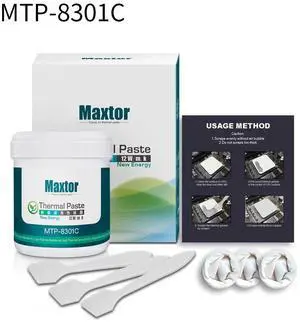
Quick View
Maxtor Thermal CPU Thermal Paste 12W/mk High-Performance Thermal Grease 150g - Premium Heat Conductive Compound for PC/GPU/PS4 Cooling Fans, Computer Heatsinks, MCU & 5G Devices
- Part Number: Canned thermal paste has a unit price about 50% lower than syringe packaging, and is more recommended for large consumer groups such as physical stores, server fields, power battery fields, aerospace fields, etc.
- Volume / Net Weight: 150g
- Thermal Conductivity: 12 W/mK
- Long Term Operating Temperature: -50 to 260 C
- Model #: Newegg027
- $42.90
- $35.90 –
- Sale Ends in 11 Hours - Save: $7.00 (16%)
- Free Shipping
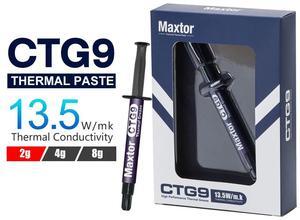
Quick View
Maxtor Thermal CTG9EL 13.5W/mk thermal paste,Gaming grade CPU/GPU/cooling fan overclocking thermal grease,High TDP device cooling solution
Limited time offer, ends 07/16
- Part Number: 9EL
- Volume / Net Weight: 2.0g
- Thermal Conductivity: 13.5 W/mK
- Long Term Operating Temperature: -50 to 250 C
- Model #: Newegg053
- $11.99
- $10.36 –
- Save: $1.63 (13%)
- Free Shipping

Quick View
Maxtor Thermal CTG9EL 13.5W/mk thermal paste,Gaming grade CPU/GPU/cooling fan overclocking thermal grease,High TDP device cooling solution
Limited time offer, ends 07/16
- Part Number: 9EL
- Volume / Net Weight: 2.0g
- Thermal Conductivity: 13.5 W/mK
- Long Term Operating Temperature: -50 to 250 C
- Model #: Newegg053
- $11.99
- $10.36 –
- Save: $1.63 (13%)
- Free Shipping
Sponsored

Quick View
PTM7950 40x80x0.2mm Phase Change GPU Thermal Pad, Real High Conductive Silicone Grease 8.5W/mK CPU Thermal Paste for PS5 Steam Deck CPU GPU SSD M.2 Laptop
Limited time offer, ends 07/06
- Thermal Conductivity: 8.5 W/mK
- Parts: 3 Years
- Model #: BL-DRGJ-4080
- $28.78
- $23.99 –
- Sale Ends in 11 Hours - Save: $4.79 (16%)
- Free Shipping

Quick View
Cooler Master CryoFuze Ultra-High Performance Thermal Paste, Nanoparticles, High CPU/GPU Conductivity W/m.k= 14m, Non Corrosive Formula, Temperature -50°C up to 250°C for CPU and GPU Coolers
- Volume / Net Weight: 2.0g
- Thermal Conductivity: 14.0 W/mK
- Long Term Operating Temperature: -50 to 250 C
- Specifications: CryoFuze 2g Scraper Grease Cleaner
- Model #: MGZ-NDSG-N07M-R2
- $5.99 –
- More options from $5.99 - $27.55
- $3.00 Shipping

Quick View
PTM7950 80x80x0.2mm Phase Change GPU Thermal Pad, High Conductive Silicone Grease 8.5W/mK CPU Thermal Paste for PS5 Steam Deck CPU GPU SSD M.2 Laptop
- Model #: PTM7950-80*80mm-A
- $25.99 –
- Free Shipping
Sponsored
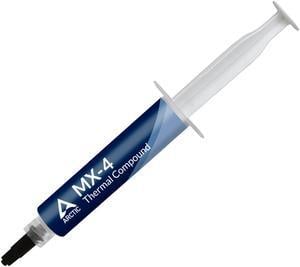
Quick View
ARCTIC MX-4 (20 g) - Premium Performance Thermal Paste for all processors (CPU, GPU - PC, PS4, XBOX), very high thermal conductivity, long durability, safe application, non-conductive, non-capacitive
- Volume / Net Weight: 20g
- Model #: ACTCP00001B
- $13.99 –
- More options from $13.96 - $17.77
- Free Shipping
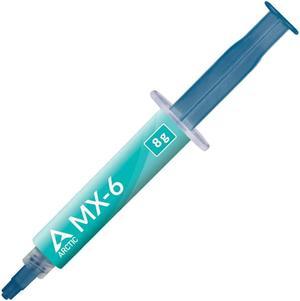
Quick View
Arctic ACTCP00081A MX-6 (8 g) Thermal Compound Paste for CPU, Consoles, Graphics Cards, laptops, Very high Thermal Conductivity, Long Durability
- Part Number: ACTCP00081A
- Model #: ACTCP00081A
- $10.99 –
- More options from $10.99 - $87.30
- Free Shipping

Quick View
in 30 days
Coxbyte TG-30 thermal paste with ultra-high thermal conductivity of 13.8W/mK, Premium Performance Thermal Paste for all processors, Canned 20g- Volume / Net Weight: 20g
- Thermal Conductivity: 17.5 W/mK
- Long Term Operating Temperature: -50 to 250 C
- Specifications: TG-30 adopts an improved nanocarbon tube composite formula with a thermal conductivity of 17.5W/mK (measured value), which can quickly reduce the temperature difference between CPU/GPU cores and meet the cooling needs of mainstream gaming consoles, high-performance graphics cards, and workstations. Its non-conductive properties completely avoid the risk of short circuit,
- Model #: coxbyte26
- $17.99
- $16.99 –
- Sale Ends in 11 Hours - Save: $1.00 (5%)
- Free Shipping
Sponsored
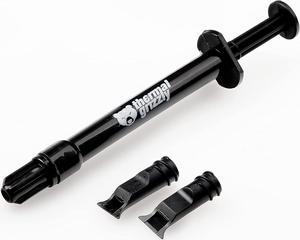
Quick View
Thermal Grizzly Kryonaut Extreme The High Performance Thermal Paste for Cooling All Processors, Graphics Cards and Heat Sinks in Computers and Consoles (2 Gram)
- Thermal Conductivity: 14.2 W/mK
- Long Term Operating Temperature: -250 °C / +350 °C
- Model #: TG-KE-002 R
- $24.04 –
- More options from $23.51
- Free Shipping
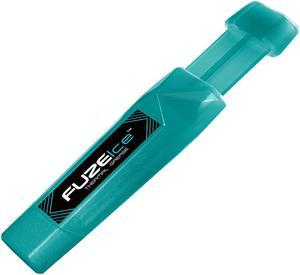
Quick View
Iceberg Thermal FUZEIce Thermal Paste Heatsink Compound CPU GPU Grease (3.5g)
- Volume / Net Weight: 3.5g
- Model #: FUZEICE4G-X0A
- $7.99 –
- Free Shipping
Sponsored
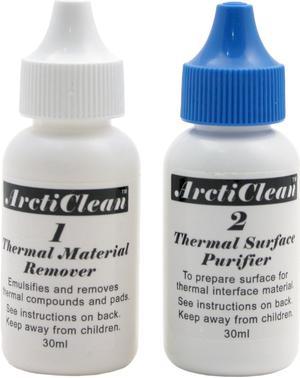
Quick View
Arctic Silver Arcticlean Thermal material Remover & Surface Purifier ACN-60ML (2-PC-SET)
- Volume / Net Weight: 2 x 30ml
- Specifications: Package Specs: 60ml Kit (2 fluid ounces) - 30ml ArctiClean 1 and 30ml ArctiClean 2.
- Model #: ACN-60ML (2-PC-SET)
- $12.99 –
- More options from $12.99 - $31.39
- Free Shipping

Quick View
Arctic Silver 5 High-Density Polysynthetic Silver Thermal Compound AS5-12G
- Volume / Net Weight: 12g
- Long Term Operating Temperature: -50 to 130 C
- Specifications: Average Particle Size: <0.49 micron <0.000020 inch Extended Temperature Limits: Peak: -50 Degrees C to >180 Degrees C Long-Term: -50 Degrees C to 130 Degrees C Performance: 3 to 12 degrees centigrade lower CPU full load core temperatures than standard thermal compounds or thermal pads when measured with a calibrated thermal diode imbedded in the CPU core. Coverage Area: A 3.5 gram syringe contains enough compound to cover at least 15 to 25 small CPU cores, or 6 to 10 large CPU cores, or 2 to 5 heat plates. At a layer 0.003" thick, the 3.5 gram syringe will cover approximately 16 square inches.
- Model #: AS5-12G
- $29.59 –
- More options from $17.79 - $48.00
- Free Shipping
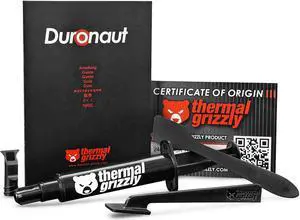
Quick View
- $23.99
- $19.99 –
- Save: $4.00 (16%)
- More options from $18.75 - $22.99
- Free Shipping

Quick View
Iceberg Thermal FUZEIce Plus Thermal Paste Heatsink Compound CPU GPU High Performance Grease (3.5g)
- Volume / Net Weight: 3.5g
- Model #: FUZEICEP4G-X0A
- $8.99 –
- Free Shipping

Quick View
CORSAIR XTM60 High Performance Thermal Paste, 3g
- Part Number: CT-9010015-WW
- Volume / Net Weight: 3.0g
- Long Term Operating Temperature: - 20 to 125 °C
- Model #: CT-9010015-WW
- $14.99 –
- $4.99 Shipping
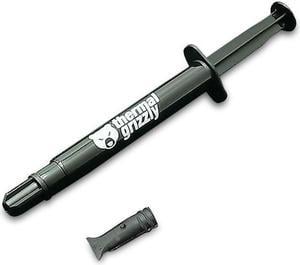
Quick View
Thermal Grizzly Conductonaut CPU GPU Cooling Ultra High Performance Liquid Metal Compound Cooler Fan Thermal Grease/Paste -1 Gram TG-C-001-R
- Volume / Net Weight: 1.0g
- Thermal Conductivity: 73 Wm / K
- Long Term Operating Temperature: 10 °C -140°C
- Specifications: Applications: CPU / GPU Thermal Thermal Conductivity: 73 Wm / K Specific gravity: 6.24g/cm³ Viscosity: 00021 pas Operating temperature: 10 °C /140°C Content: 5g
- Model #: Conductonaut 1 Gram
- $14.89 –
- More options from $10.75 - $14.99
- Free Shipping

Quick View
Iceberg Thermal FUZEIce Thermal Paste Heatsink Compound CPU GPU Grease (3.5g)
- Volume / Net Weight: 3.5g
- Model #: FUZEICE4G-X0A
- $7.99 –
- Free Shipping

Quick View
PTM7950 40x40x0.2mm Phase Change GPU Thermal Pad, High Conductive Silicone Grease 8.5W/mK CPU Thermal Paste for PS5 Steam Deck CPU GPU SSD M.2 Laptop
- Model #: Honeywell PTM7950-40*40mm-A
- $12.99 –
- Free Shipping

Quick View
Thermal Grizzly - Aeronaut - High Performance Thermal Paste - Cooling and Mute Heat Sink Paste for CPU (All Kinds of Them) and Graphics Card Coolers (1 Gram)
- Volume / Net Weight: 1.0g
- Thermal Conductivity: 8.5 W/Mk
- Long Term Operating Temperature: 150 °C / +200°C
- Model #: TG-A-001 RS
- $7.89 –
- More options from $7.89
- Free Shipping
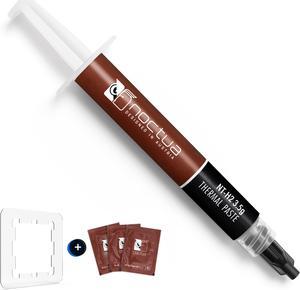
Quick View
Noctua NT-H2 3.5g AM5 Edition, Pro-Grade Thermal Compound with Thermal Paste Guard for AMD AM5 CPUs incl. 3 Cleaning Wipes (3.5g)
- Model #: NT-H2 3.5g AM5 Edition
- $37.90 –
- More options from $37.90 - $39.00
- Free Shipping
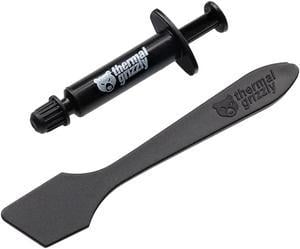
Quick View
Thermal Grizzly Kryonaut The High Performance Thermal Paste for Cooling All Processors, Graphics Cards and Heat Sinks in Computers and Consoles
- Model #: Kryonaut 1g - TG-K-001-RS
- $9.99 –
- Free Shipping

Quick View
- $9.99
- $7.90 –
- Save: $2.09 (20%)
- Free Shipping
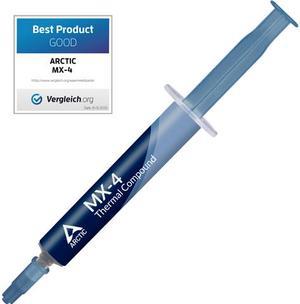
Quick View
ARCTIC MX-4 - Thermal Compound Paste - Carbon Based High Performance - Heatsink Paste - Thermal Compound CPU for All Coolers, Thermal Interface Material - High Durability - 8 Grams
- Volume / Net Weight: 8.0g
- Model #: ACTCP00008B
- $7.99 –
- More options from $7.99 - $48.99
- Free Shipping
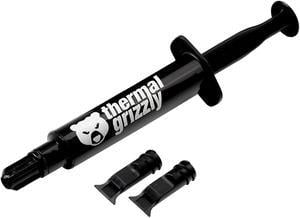
Quick View
Thermal Grizzly Hydronaut - Conductive, High Performance Thermal Paste - Extensive for air cooling systems, water cooling, for all heatsinks CPU and GPU 7.8g
- Model #: TG-H-030-R - Hydronaut - 7,8 Gram / 3 ml
- $19.99 –
- Free Shipping
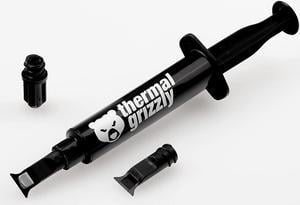
Quick View
Thermal Grizzly Hydronaut - Conductive, High Performance Thermal Paste - Extensive for air cooling systems, water cooling, for all heatsinks CPU and GPU 3.9g
- Model #: Hydronaut 1.5 ml - TG-H-015-R
- $14.99 –
- Free Shipping

Quick View
Thermal Grizzly Conductonaut Extreme Thermal Grease - 1 Gram Thermal Paste for Cooling The CPU, GPU
- Model #: CE 001
- $19.99 –
- More options from $16.75 - $19.99
- Free Shipping
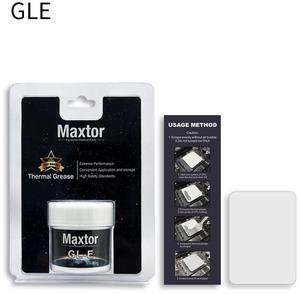
Quick View
Maxtor Thermal GLE Thermal Paste 10.5W/mk 50g - Multi-Device Thermal Grease for PC/CPU/PS4 Cooling, Game Consoles, MCU & Computer Heatsink Maintenance
- Volume / Net Weight: 50g
- Thermal Conductivity: 10.5W/mK
- Long Term Operating Temperature: -50 to 250 C
- Specifications: GEL canned thermal paste can be purchased at an extremely low price with a net content of 50g and a thermal conductivity coefficient of 10.5W/mK, which can quickly reduce the temperature difference between CPU/GPU cores and meet the cooling needs of mainstream gaming laptops, desktop computers, and mid-range graphics cards.
- Model #: Newegg005
- $16.99 –
- Free Shipping

